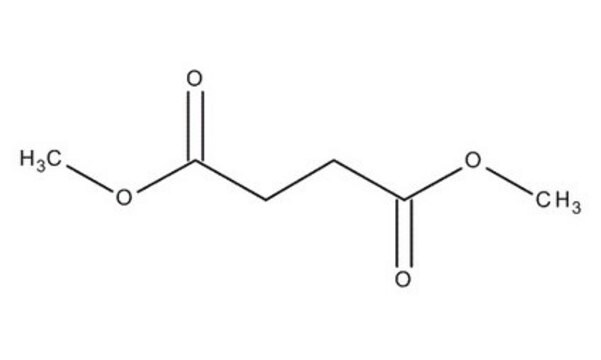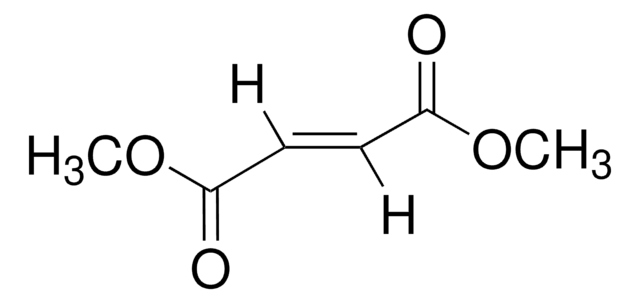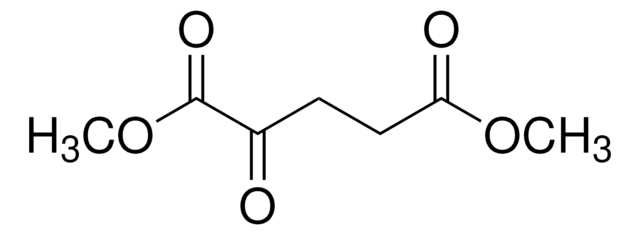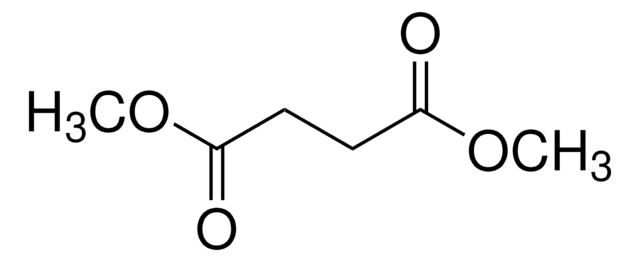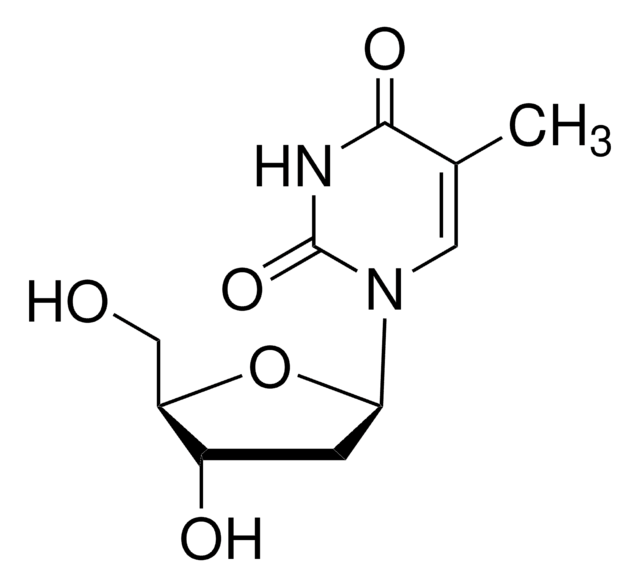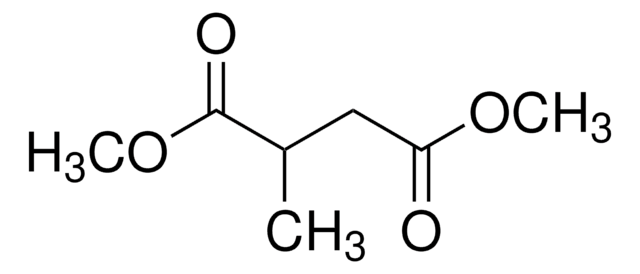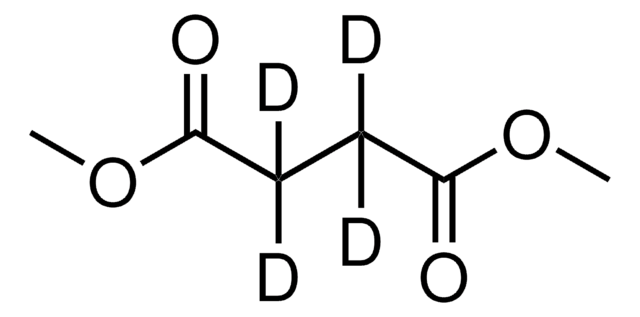Kluczowe dokumenty
W239607
Dimethyl succinate
98%, FG
Synonim(y):
Dimethyl butanedioate, Succinic acid dimethyl ester
About This Item
Halal
Kosher
Polecane produkty
pochodzenie biologiczne
synthetic
Poziom jakości
klasa czystości
FG
Halal
Kosher
zgodność regionalna
EU Regulation 1334/2008 & 178/2002
FDA 21 CFR 117
FDA 21 CFR 172.515
ciśnienie pary
0.3 mmHg ( 20 °C)
Próba
98%
temp. samozapłonu
689 °F
granice wybuchowości
8.5 %
współczynnik refrakcji
n20/D 1.419 (lit.)
bp
200 °C (lit.)
mp
16-19 °C (lit.)
gęstość
1.117 g/mL at 25 °C (lit.)
Zastosowanie
flavors and fragrances
Dokumentacja
see Safety & Documentation for available documents
alergen pokarmowy
no known allergens
Organoleptyczne
green; fruity; floral; sweet
ciąg SMILES
COC(=O)CCC(=O)OC
InChI
1S/C6H10O4/c1-9-5(7)3-4-6(8)10-2/h3-4H2,1-2H3
Klucz InChI
MUXOBHXGJLMRAB-UHFFFAOYSA-N
Szukasz podobnych produktów? Odwiedź Przewodnik dotyczący porównywania produktów
Opis ogólny
Zastosowanie
- Metabolic Bypass Rescues Aberrant S-nitrosylation-Induced TCA Cycle Inhibition and Synapse Loss in Alzheimer′s Disease Human Neurons.: This research discusses the role of metabolic intermediates like Dimethyl succinate in bypassing biochemical blocks in Alzheimer′s disease, offering potential therapeutic avenues (Andreyev et al., 2024).
- Update to RIFM fragrance ingredient safety assessment, dimethyl succinate, CAS Registry Number 106-65-0.: A comprehensive safety assessment of Dimethyl succinate as a fragrance ingredient, highlighting its toxicological profile and safe usage parameters (Api et al., 2023).
Hasło ostrzegawcze
Warning
Zwroty wskazujące rodzaj zagrożenia
Zwroty wskazujące środki ostrożności
Klasyfikacja zagrożeń
Eye Irrit. 2
Kod klasy składowania
10 - Combustible liquids
Klasa zagrożenia wodnego (WGK)
WGK 1
Temperatura zapłonu (°F)
201.2 °F - closed cup
Temperatura zapłonu (°C)
94 °C - closed cup
Środki ochrony indywidualnej
Eyeshields, Gloves, type ABEK (EN14387) respirator filter
Wybierz jedną z najnowszych wersji:
Masz już ten produkt?
Dokumenty związane z niedawno zakupionymi produktami zostały zamieszczone w Bibliotece dokumentów.
Klienci oglądali również te produkty
Nasz zespół naukowców ma doświadczenie we wszystkich obszarach badań, w tym w naukach przyrodniczych, materiałoznawstwie, syntezie chemicznej, chromatografii, analityce i wielu innych dziedzinach.
Skontaktuj się z zespołem ds. pomocy technicznej